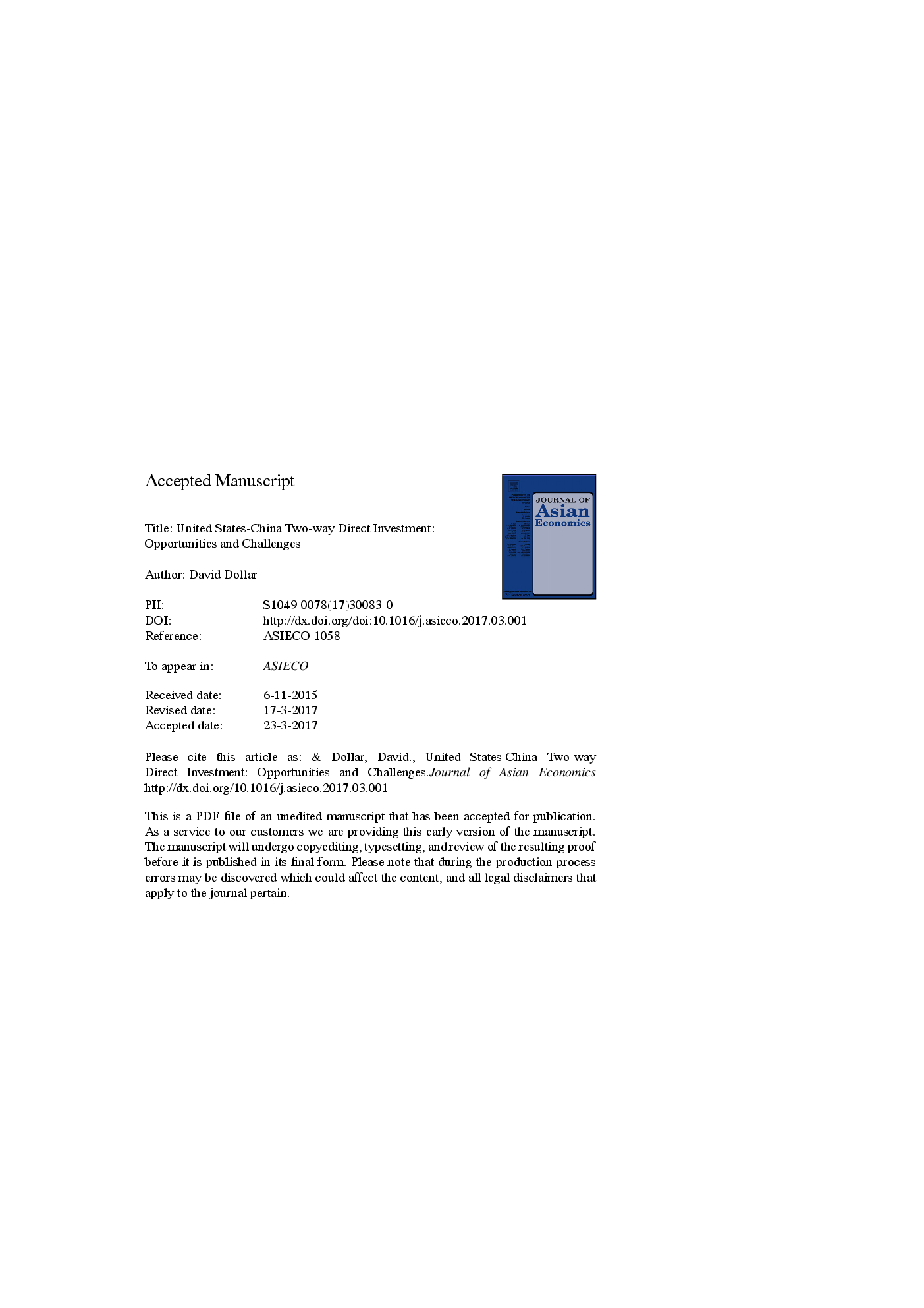ترجمه فارسی عنوان مقاله
سرمایه گذاری مستقیم دو طرفه ایالات متحده و چین: فرصت ها و چالش ها
عنوان انگلیسی
United States-China two-way direct investment: Opportunities and challenges
| کد مقاله | سال انتشار | تعداد صفحات مقاله انگلیسی |
|---|---|---|
| 96734 | 2017 | 29 صفحه PDF |
منبع

Publisher : Elsevier - Science Direct (الزویر - ساینس دایرکت)
Journal : Journal of Asian Economics, Volume 50, June 2017, Pages 14-26

